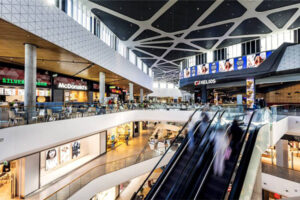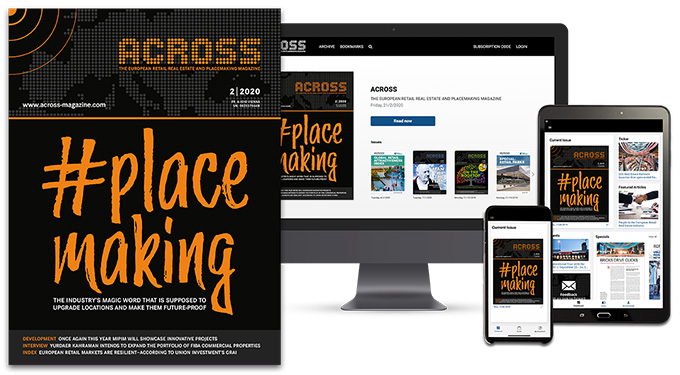ACROSS: You have been working in retail consulting for over 30 years and have seen a lot of change. In your opinion, what is the greatest challenge at the moment?
Joachim Stumpf: There is no question that we have enormous social and political hurdles to overcome. Multiple crises repeatedly lead to upheavals. Society and the economy are not used to dealing with them. Unfortunately, the political arena does little to calm the discussions, and it unsettles consumers. In addition, at the end of 2024, there was a wave of redundancies in the automotive industry in addition to Germany’s already low economic growth. At the same time, however, consumers are seeing wage increases, and we are slowly getting a grip on inflation. Nevertheless, the propensity to save and the low willingness to invest show that uncertainty and negative factors still predominate.
ACROSS: What challenges do you see at the retail management level?
Stumpf: The big challenge here is aligning business models profitably, utilizing suitable digital opportunities, and creating stationary experiences. Regarding digital possibilities, many players initially only see the opportunities. In practice, implementation is complex. Where do I use digital opportunities? Do I only use them in marketing and/or sales – or to improve channel interaction and organization? Then, there are the aspects of artificial intelligence (AI), process optimization, customer service, etc. Every single aspect involves investment. Many retailers keep investing in digital processes without foreseeing whether they will be profitable and accepted by consumers. Bringing these aspects together profitably is what makes a retailer competitive.
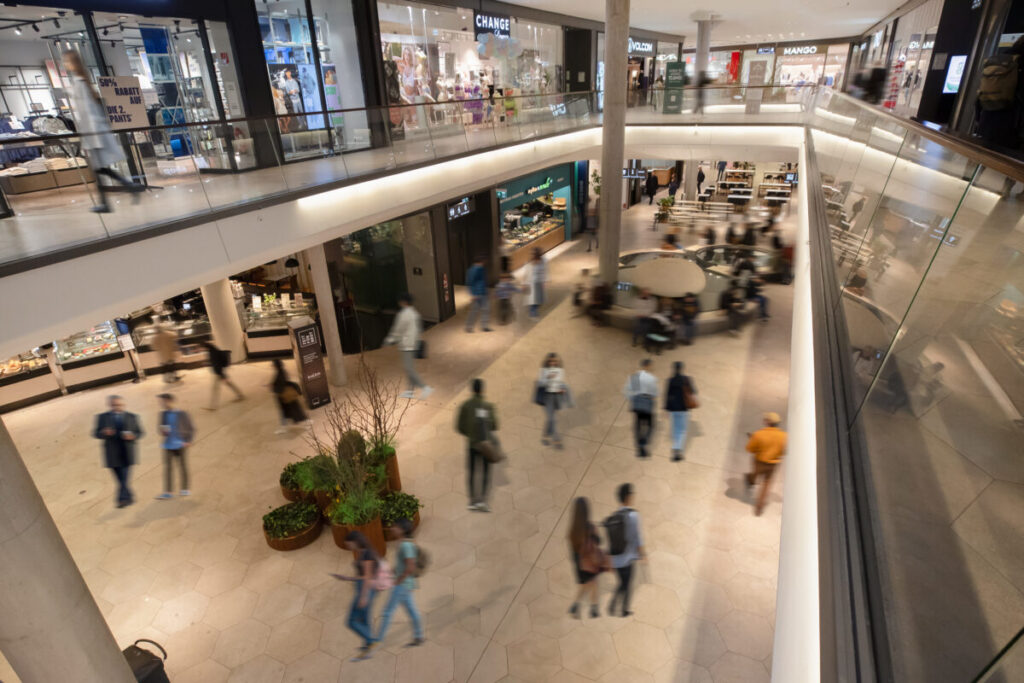
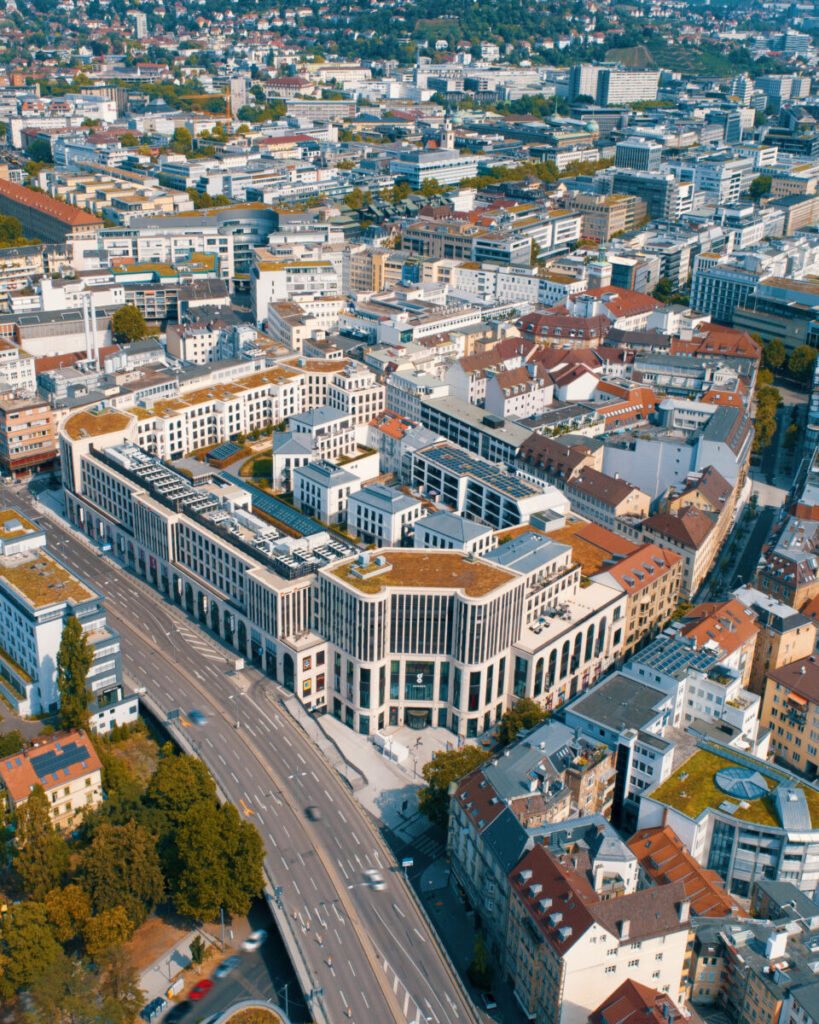
ACROSS: Which retailers are particularly well positioned?
Stumpf: We are observing clear polarization between luxury and discount, as well as between experience and meeting demand. The luxury and discount segments are growing. However, there is also polarization between strong and weak retailers; surviving mediocrity is becoming increasingly difficult.
ACROSS: What is happening to those in the middle?
Stumpf: We are losing many suppliers here. In addition to the textile sector, in general, this mainly affects medium-sized specialist retailers located in the city centers of small and medium-sized towns. Internationally expanding retailers and manufacturers are moving their stores and showrooms to large cities and conurbations. Overall, we are also seeing polarization between strong and weak locations. Advancing polarization is a key issue when it comes to discussing the impact of the transformation in retail and what options we have to counter it.
ACROSS: Beyond the retail level: What levels of polarization are there in terms of locations?
Stumpf: We have a level of polarization with the so-called macro-locations. Behind this are cities and regions that are resilient and less resilient. The resilient ones have more opportunities to compensate for the loss of retail. They attract international retailers and can replace lost space with hospitality or entertainment. Whether a location is strong or resilient is not only determined by its size. Factors such as catchment area, economic growth, purchasing power, tourism, or whether there is a university are at least as important.
ACROSS: What would be an example of a smaller but resilient city?
Stumpf: In Germany, one example would be the Bavarian city of Rosenheim. With its 65,000 inhabitants, Rosenheim is much more resilient than cities of the same size or larger in North Rhine-Westphalia, where there are many city centers but hardly any catchment areas. Rosenheim is a shopping city between Munich and Salzburg and, therefore, has a high degree of centrality in retail. In addition to the macro level mentioned above, the micro-location determines whether a location is attractive. This is also becoming polarized. For example, there are sections of a high street that have good footfall and stable rents, although overall rents on this high street are falling, particularly along the edges.
ACROSS: Let’s examine the polarization at shopping centers. What do you think about discount stores expanding into large retail spaces?
Stumpf: We are intensively discussing this topic internally. Yes, I fear that there could be a trading-down effect. However, discussions with our center managers show a different picture, at least in part. Discount formats are strong footfall generators at locations where shopping centers have a local supply function, and the neighboring tenants appreciate that. At centers with an upmarket offering and supra-regional appeal, such offers are only suitable to a limited extent.
ACROSS: However, those concepts pay less rent.
Stumpf: That’s true, but you accept that. What is the alternative? There would be vacancies, high conversion costs, and a gap in footfall. It is clear that integrating discount concepts is a viable alternative overall. When we discuss discounters in general, we often neglect one aspect. Rapidly expanding concepts such as Woolworth or Action are not comparable with the 1-euro-store concepts we know from the 1990s. They are more ambitious in their store design and, with their mix of permanent and changing product ranges, remain attractive to consumers, who may even be higher earners.
ACROSS: The triumph of discount concepts naturally also fits in with the consumer climate of recent years. How do you assess the consumer climate in 2025?
Stumpf: The consumer climate and sentiment were much more positive at the turn of the year than in previous months. This is related to the dampened fears of inflation. For the first time, we are also seeing a slight decline in savings. I have already mentioned wage growth. Although consumer sentiment is picking up again in Germany, as I mentioned at the beginning, Germans remain more pessimistic in an international comparison.
ACROSS: In fact, the figures differ significantly across Europe. In Eastern Europe and Turkey, people are much more willing to buy.
Stumpf: There are simply differences in mentality. We Germans have a deep-rooted tendency to save, which increases out of caution during crises. Germans’ sense of security has suffered lately. Added to that is the aforementioned feeling of not experiencing strong political leadership. The fact that the centrist parties in Germany are constantly at loggerheads is the opposite of confidence-building. The retail environment is always a reflection of the social situation.
ACROSS: In your opinion, what role does retail real estate, primarily shopping centers, play against this backdrop?
Stumpf: A study we conducted with Savills showed that a quarter of shopping centers are stable cash cows. However, those properties’ achievable prices are so low that sales are only initiated for individual reasons. In addition, there are hardly any core products on the market. Those that would sell do not achieve the book value. We expect the transaction market to pick up in 2025 as prices have bottomed out. In 2024, we saw substantial transactions with the Fünf Höfe and the Pasing Arcaden, but few in total, carried out by non-institutional investors. I believe value-added products will become very interesting in the years to come. We see movement here, and the interest rate cut will reinforce that. However, the buyers are not institutional investors but specialized, risk-averse, opportunistic investors. The situation in Germany is still too uncertain for risk-averse investors.
ACROSS: Nevertheless, there are properties in Germany that have enormous potential.
Stumpf: Yes, undoubtedly, but in most cases, considerable investments have to be made in the properties. For the seller, this means that they are prepared to accept depreciation.
ACROSS: Overall, however, there is too much space.
Stumpf: Yes, that applies to shopping centers and high streets. Almost everywhere where space is lost, less new retail space is created. Exceptions include top locations or large national shopping centers. This can already be seen in the refurbishment of department stores. Here, we often only have 20 percent of the original space, with retail on the first floor and a maximum of the second floor. The remaining uses are then all kinds of mixed uses, from residential to office to fitness or even kindergartens and medical care. When we create revitalization concepts, there is a gradation. The first interesting use after gastronomy and leisure is health, followed by other uses that bring in the public. They include, for example, public authorities or adult education centers. All of these are footfall generators that have high synergies with retail. Office and, finally, residential uses come after that. This is a balancing act in the discussion. On the one hand, there is a desire to increase residential space in city centers. However, residential space poses challenges in terms of construction and building regulations, does not generate its catchment area, and is associated with high construction costs.
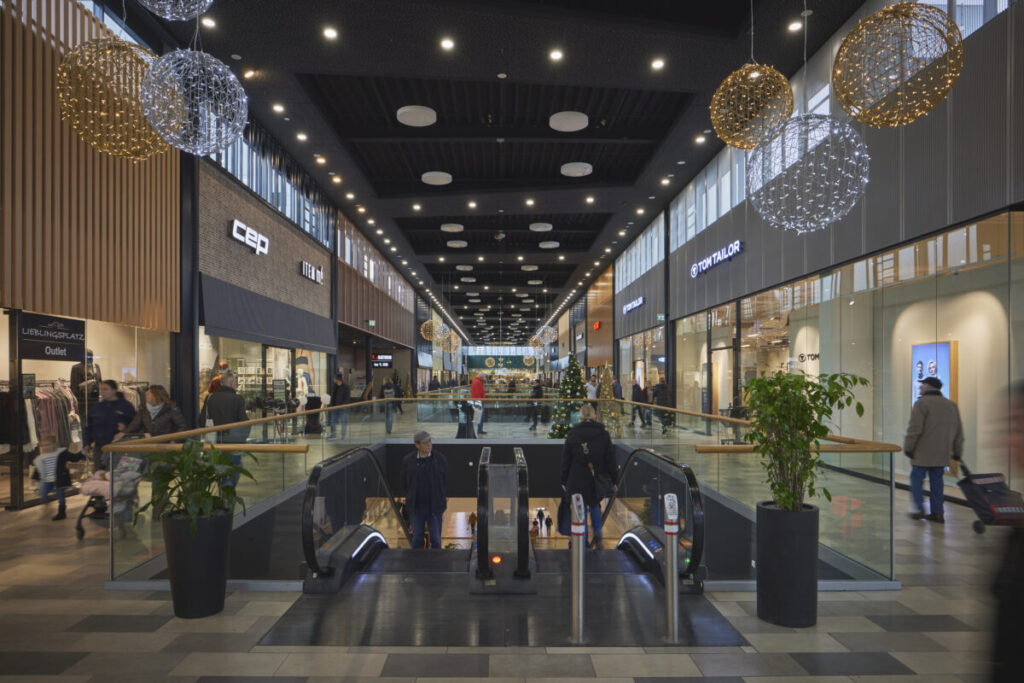
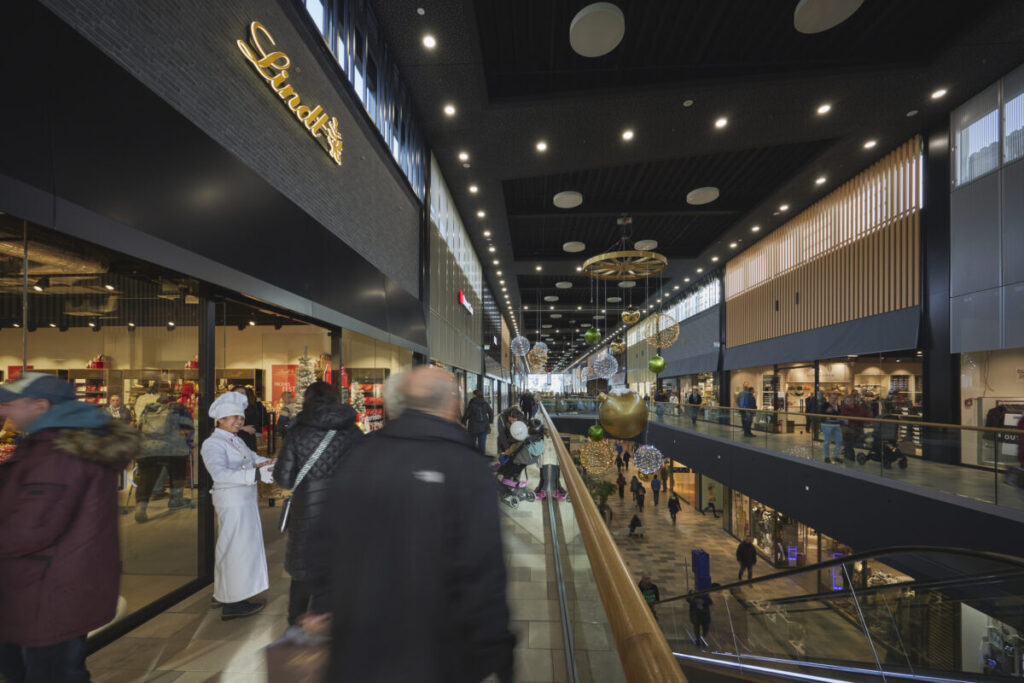
ACROSS: Ultimately, this means that the dominance of retail is about to end.
Stumpf: We must rethink a wide range of spaces and the positioning of large retail properties. The issue of project development or refurbishment is becoming more complex. There is no one-size-fits-all solution. The market potential, competition, catchment area, building law situation, market and rental potential, investment requirements, property quality, and other factors must be considered and evaluated individually for each location. This is hard and creative work with very individual results for each property. Each property comes to a different conclusion. It is complex, and implementing such concepts involves considerable investment, but we also see that many market participants are no longer willing to invest.
ACROSS: What is the most significant change in the retail sector mix, in addition to the general change in the types of use in cities and at shopping centers?
Stumpf: That’s the decline in the shoe and fashion segment. Fashion is the main reason people come to city centers and shopping malls. Recently, the fashion share of both has been between 45 and 50 percent, with a clear downward trend. In most cases, more space from the fashion sector is being lost than added in subsequent lettings.
ACROSS: The growing segments are hospitality and entertainment.
Stumpf: Yes, eating out has increased enormously across all age and income groups. This has led to very differentiated concepts, which have also moved into vacant and sometimes large retail spaces. My neighborhood in Munich has a former Mango, where Five Guys now operates over three floors. Shopping centers are even more advanced here than city centers because they can act faster. The proportion of restaurants has increased across all centers in recent years.
ACROSS: However, the shopping center sector has long debated whether catering and entertainment providers should pay less, like the discounters we previously discussed.
Stumpf: The textile sector has always paid the highest rent for large spaces. If, as a result of market developments, I then lose space where the highest rent payers were, I can’t manage without losses. Even if I charge the same rent, I still have to invest heavily in converting the space. It is evident that with the current development of retail, rents tend to fall as the quality of locations and properties falls, which puts pressure on rents. However, top locations can still be described as stable or slightly growing. In addition to purely stationary sales opportunities, they also offer strong tenants the potential to increase online sales and enhance the attractiveness of the multichannel experience. As crucial as this additional benefit is, it has not been possible to agree on an additional rental share for almost 20 years.
ACROSS: The bottom line is that reduced retail leads to more complexity at all levels.
Stumpf: Yes, but despite all the challenges, I have a relaxed view thanks to my many years of professional experience: Viable solutions can be found for all properties, even if the path to them is sometimes economically painful.
ACROSS: That is an encouraging statement.
Stumpf: We must constantly rethink, reinterpret, and reimplement retail and its space. What always remains true, however, is that retail has been synonymous with encounters across all centuries and cultures. This is even more evident in city centers than at shopping centers. We are social beings. Technology brings simplification and fun but not human closeness. As simple as it sounds and as often as this statement has been made – meeting someone and experiencing something with all your senses makes a difference. Despite all the polarization and narrowing, shopping centers, if they are well managed, and city centers will remain interesting locations.

Joachim Stumpf
Joachim Stumpf, Managing Director of BBE Holding and IPH Handelsimmobilien, has been a management consultant with BBE Handelsberatung since 1988 and its Managing Director since 2007. BBE Handelsberatung has been a leading consultancy in the retail and consumer goods sector for more than 70 years. As part of his role, he is also managing director and shareholder of IPH Handelsimmobilien and IPH Center management, which specialize in retail property and center management, since 1994. In 2024, he was appointed to the Council of Real Estate Experts of the ZIA Zentraler Immobilien Ausschuss e.V.




